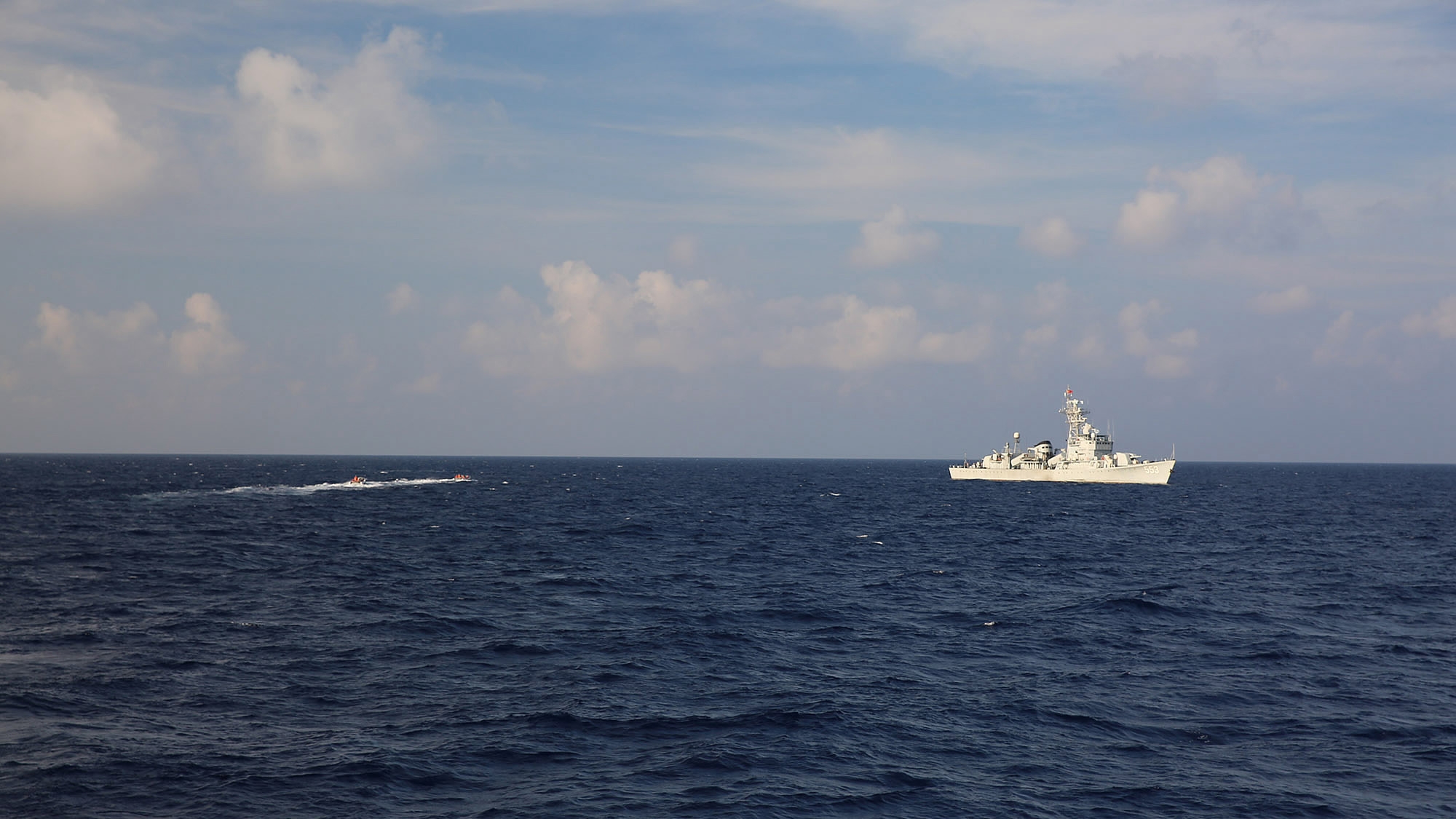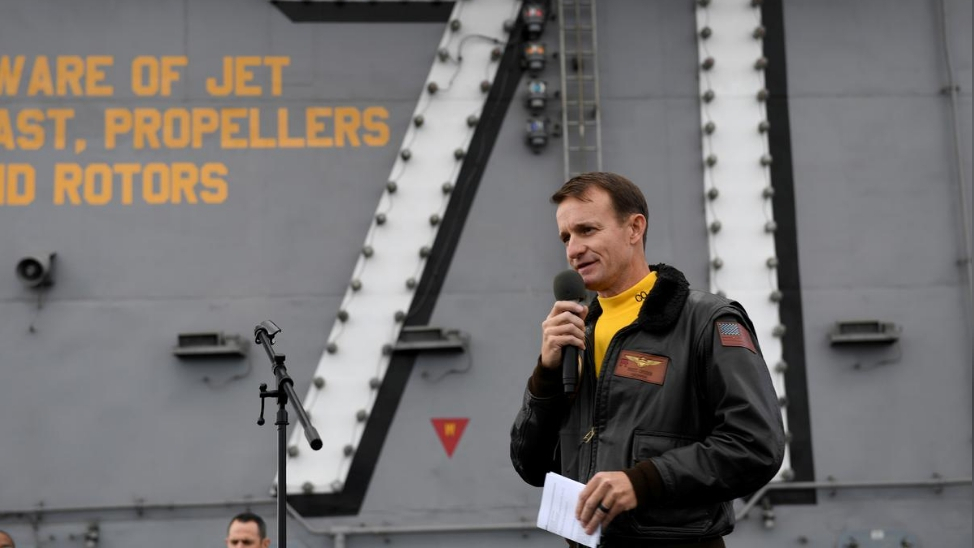
Editor's note: Hamzah Rifaat Hussain is a former visiting fellow at the Stimson Center in Washington and serves as assistant researcher at the Islamabad Policy Research Institute (IPRI) in Pakistan. The article reflects the author's opinions and not necessarily the views of CGTN.
To maneuver or outmaneuver in the South China Sea seems to be a major policy consideration for the Joe Biden administration. Within weeks in office, tinkering with the sensitive warm waters of the region instead of engaging in constructive dialogue with China has become standard practice for officials who lack detailed understandings of the dynamics underpinning the region.
The U.S. military's Pacific Command on January 29 claimed that China's military flights in the past week fit a pattern of destabilizing and aggressive behavior by Beijing. The already controversial Theodore Roosevelt carrier strike group was also closely monitoring the People's Liberation Army (PLA) Navy and Air Force activity. Interestingly enough, the Pacific Command fell short in labeling it as a threat to the U.S. Navy aircraft.
While Chinese activities have not been labeled as a threat, there is scant understanding of how the presence of the Theodore Roosevelt carrier strike group poses an existential threat to China. The decision to not directly label Chinese aerial activity as a threat may also be due to limited understanding of the reasons as to why the PLA Navy and Air Force activities were actually taking place.
Regional security and diplomatic sources monitoring the developments in the sea said Chinese aerial deployments on missions beginning on January 23 coincided with the U.S. carrier group passing through the south of the Pratas island located approximately 310 kilometers southeast of Hong Kong. Such provocations prompted PLA to operationalize given that these buildups predate the Biden era.
Biden's predecessor Donald Trump had constantly made chaos over the South China Sea only for Beijing to respond befittingly in light of threat perceptions to its national sovereignty. The new administration needs to understand that labeling Chinese military activity as controversial while turning a blind eye to provocations will only widen trust deficits in the post-Trump era.
There is a concerted attempt on part of Washington, D.C. to label China as an expansionist state with regional hegemonic designs which pose a threat to states in the Asia Pacific. Earlier this week, New Zealand cautioned its Trans-Tasman ally Australia towards showing respect to China given that the latter has tread a similar path to that of the Trump administration in constantly viewing Chinese activities as an imminent threat to Australian national interests.

Captain Brett Crozier, former commanding officer of the U.S. Navy aircraft carrier USS Theodore Roosevelt, December 19, 2019. /Reuters
Captain Brett Crozier, former commanding officer of the U.S. Navy aircraft carrier USS Theodore Roosevelt, December 19, 2019. /Reuters
Other Asia Pacific states have reached an understanding that cooperation on economic and political fronts can forge an everlasting partnership which promotes regional connectivity and could reap benefits for the pandemic stricken populations across the region. None of this has been factored by Washington, D.C. where any military activity in response to U.S. provocations is erroneously labeled as worrisome if not an outright threat.
The very same regional and diplomatic sources which are familiar with the South China Sea believe Beijing's gearing up of its military is to defend itself from an existential threat posed by the U.S. The exercises conducted are to thwart any reckless adventurism from American aircraft carriers. These exercises also follow secessionist tendencies in Taiwan promoted by the U.S. alongside heightened rhetoric equating the rise of China as an imminent threat to American interests.
As per the definition of deterrence, the costs of attacking an adversary are to outweigh the benefits accrued so the presence of provocations and foreign interference would entail that military exercises are critical in meeting every reckless adventurism with a befitting response. Deterrence is not the same as aggression or expansionism as Washington, D.C. has constantly labelled China's motivations as.
The bilateral relationship between the two countries continues to be on the crossroads which is unfortunate in the post-Trump era. Heightened expectations of Biden adopting a constructive approach towards diffusing tensions are dampened by such callous statements where military activities as acts of defense are slammed yet provocations and foreign interference continue unabated.
There is also scant understanding of how China has bristled over U.S. military activities in the region which according to Beijing is not conducive to peace and stability in the region. Not once, has China not called for dialogue and reconciliation to resolve issues which challenges the assertion that it is an aggressive and expansionist state. The onus is on the U.S. to take the lead given that it has not opened up diplomatic channels under Biden so far.
Hence, the U.S. military claiming that Chinese activity fits a pattern of destabilizing and aggressive behavior fails to account for how a sovereign state needs to deter and dissuade provocations. A better understanding can result in a better future for the region.
(If you want to contribute and have specific expertise, please contact us at opinions@cgtn.com.)

